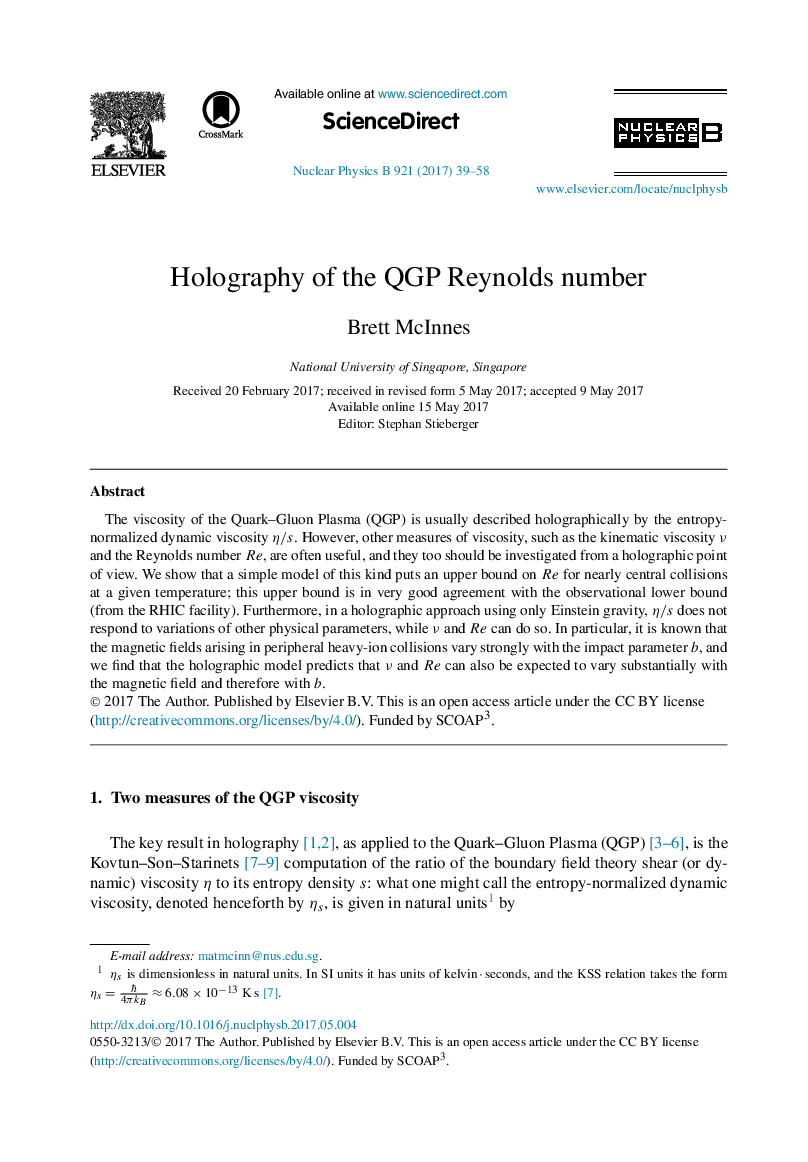| Article ID | Journal | Published Year | Pages | File Type |
|---|---|---|---|---|
| 5494273 | Nuclear Physics B | 2017 | 20 Pages |
Abstract
The viscosity of the Quark-Gluon Plasma (QGP) is usually described holographically by the entropy-normalized dynamic viscosity η/s. However, other measures of viscosity, such as the kinematic viscosity ν and the Reynolds number Re, are often useful, and they too should be investigated from a holographic point of view. We show that a simple model of this kind puts an upper bound on Re for nearly central collisions at a given temperature; this upper bound is in very good agreement with the observational lower bound (from the RHIC facility). Furthermore, in a holographic approach using only Einstein gravity, η/s does not respond to variations of other physical parameters, while ν and Re can do so. In particular, it is known that the magnetic fields arising in peripheral heavy-ion collisions vary strongly with the impact parameter b, and we find that the holographic model predicts that ν and Re can also be expected to vary substantially with the magnetic field and therefore with b.
Related Topics
Physical Sciences and Engineering
Mathematics
Mathematical Physics
Authors
Brett McInnes,
